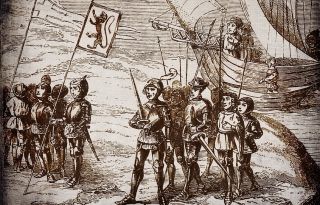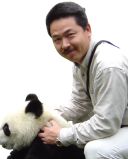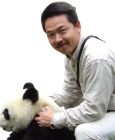Evolutionary Psychology
Why Is Human Sexuality So Diverse?
Evolution offers a new answer.
Updated March 29, 2024 Reviewed by Tyler Woods
Key points
- Men with same-sex preference tend to have fewer children than heterosexuals.
- Genes linked to bisexuality are also linked to risk-taking, predicting more children in pre-modern socieites.
- Heterosexuals carrying homosexual genes tend to be more adventurous and have more sexual partners.
- Genes linked to exclusive homosexuality can also prevail via kin selection.
Humans are a colorful spectrum of diversity, particularly in matters of sexuality. Just take a glance at the expanding acronym LGBTQIA2S+, encompassing lesbian, gay, bisexual, transgender, queer, intersex, asexual, and two-spirit individuals. Surveys suggest that anywhere from 2 to 10 percent of us lean toward same-sex attraction, regardless of cultural boundaries. But why does this mosaic of sexual minorities persist across civilizations worldwide?
In short: it’s evolution’s handiwork. Same-sex behavior isn’t unique to us; it spans across vertebrates and even insects. Within our species, sexual preference diversity likely served an adaptive purpose, especially in certain historical contexts. This theory gains support from a recent groundbreaking study published in Science Advances (1).
Delving into the UK Biobank’s treasure trove, the authors Siliang Song and Jianzhi Zhang from the University of Michigan illuminate a fascinating landscape. Their findings reveal that both bisexual and gay men, when compared to their heterosexual counterparts, often navigate a path with fewer children, or Darwinian fitness in the jargon of evolution. However, bisexual men suffer less in this respect.
But, a loss is a loss, as you may say. How can bisexual men make up this fitness deficit between them and heterosexual men?
This takes us to an earlier study, showing that heterosexuals carrying homosexual genes tend to have more sexual partners (2). It’s worth noting that many ancient and traditional societies weren’t monogamous; thus, men with multiple partners left behind more descendants, spreading their genetic legacy far and wide.
Think of historical figures like Moulay Ismael the Bloodthirsty, purportedly fathering 888 children, or the vast spread of genes linked to figures like Genghis Khan or Spanish conquistadors. But beyond these extreme cases, it was men’s penchant for risk-taking that often correlated with more sexual encounters and, consequently, more offspring.
So, how does this tie back to bisexual genes? Well, it appears that these genes might predispose folks not only to bisexual behavior but also to risk-taking tendencies. This association is key, especially in pre-modern societies where adventurous men might be more likely to sow their wild oats far and wide (3). Therefore, the daring genes linked to male bisexuality aren’t just about sexual preference; they also confer a fitness edge, as the researchers aptly describe them as “reproductively advantageous.”

Song and Zhang’s discoveries also paint a stark reality: while it’s no shocker that modern same-sex women can now opt for artificial means to conceive, gay men who exclusively desire their own gender face the harshest blow to their reproductive fitness—they stand with empty cradles. But how do we reconcile their existence through the lens of evolution?
One scenario suggests that among heterosexual individuals lurk some carrying genes related to homosexuality, and they embark on daring exploits, sowing the seeds of their lineage through a tapestry of adventures. As such, it’s not far-fetched if we ponder the possibility that some of history’s towering conquerors might have carried the torch of gay genes.
But there’s another likelihood worth exploring.
Consider a society of social bees, wasps, ants, and their mammalian counterpart, the naked mole-rat. The majority are diligent workers and fearless defenders. Despite their essential roles in maintaining the colony, they do not directly reproduce. Instead, they delegate this task to the queen. This strategy hinges on the shared genes among colony members. When the queen reproduces, she passes down genes not only of her own but also of those who share genes with her. So, everybody gains.
Passing down genes through genetic relatives is known as kin selection. Think of it as competing in a multi-event sports extravaganza like the triathlon, heptathlon, or decathlon. Victory doesn’t hinge on clinching every individual event; it’s about amassing the highest overall score, even if you don’t come first in any single competition.
In this game of genetic legacy, humans too have long relied on kin selection to pass on the shared threads of our DNA. It’s the reason why we instinctively extend kindness and support to our genetic kin, readily sacrificing our time and resources for the betterment of our children, grandchildren, nieces, nephews, and cousins.
Our traditional social structures, often manifested in large families or clans cohabiting harmoniously, have been—and continue to be—havens for kin selection. Within these close-knit circles, opportunities abound to bolster our genetic fitness without directly partaking in reproduction. This ethos is so deeply ingrained that in certain traditional farming societies of Southeast Asia, a young mother might opt to kill her first newborn if he was a son, believing a daughter could better aid in raising many subsequent children she expected to have down the line. In this light, even those who exclusively favor same-sex partnerships can find a foothold for their genes to flourish.
References
1. Song, S., and J. Zhang (2024). Genetic variants underlying human bisexual behavior are reproductively advantageous. Science Advances, 10, eadj6958.
2. Zietsch, B. P., M. J. Sidari, A. Abdellaoui, R. Maier, N. Langstrom, S. Guo, G. W. Beecham, E. R. Martin, A. R. Sanders, and K. J. H. Verweij (2021) Genomic evidence consistent with antagonistic pleiotropy may help explain the evolutionary maintenance of same-sex sexual behaviour in humans. Nat. Hum. Behav. 5, 1251–1258.
3. Von Rueden, C. R., and A. V. Jaeggi (2016). Men’s status and reproductive success in 33 nonindustrial societies: Effects of subsistence, marriage system, and reproductive strategy. Proc. Natl. Acad. Sci. U.S.A. 113, 10824–10829.




